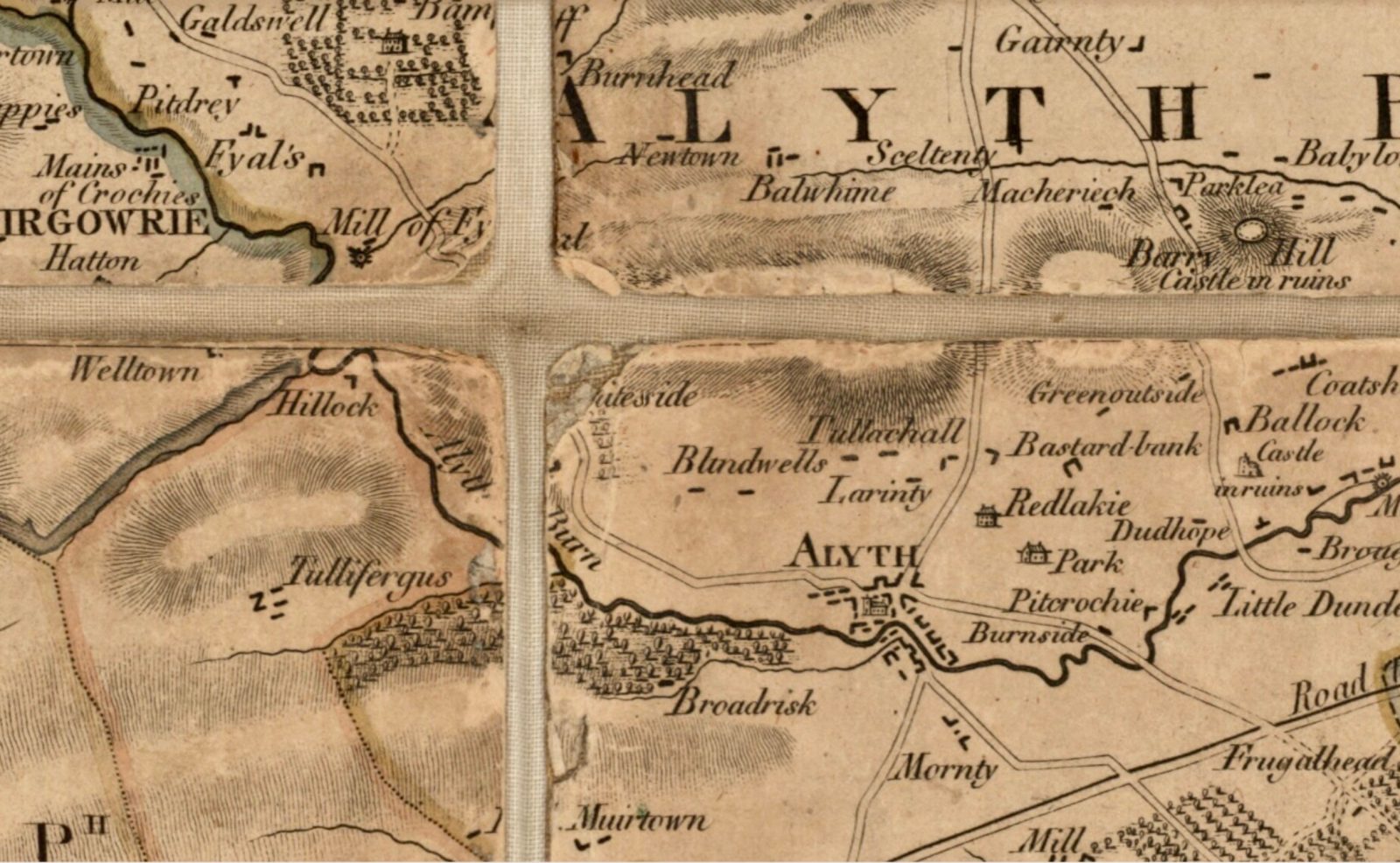Cattle droving was the backbone of the Scottish economy from the 17thcentury to the 19thcentury and would have contributed greatly to Alyth’s developing prosperity. It grew to a huge scale across the country in the 18th and 19th centuries following the Union between Scotland and England in 1707 when it became easier to trade across the border.
The French Revolutionary and Napoleonic Wars up to 1815 also created an exceptionally high demand because it was the custom to give a daily ration of salt beef to every soldier and there were an enormous number of men under arms in the British army and navy at that time.
The cattle themselves were the forerunners of today’s Highland cattle. They were much smaller than most breeds today, probably not weighing much more than 254 kg, and were, and still are, the hardiest of breeds and easy to handle. Until red/brown variants were exported from Glen Lyon in the mid 19th century, they were black. The gene for the red/brown colour proved to be dominant and this is now the colour of most of the breed in various shades.
The drovers would have been regarded as important members of the Highland community and they were hardy men. A.R.B. Haldane, who made a special study of them, listed the attributes they had to have as: extensive and intimate knowledge of the country and cattle,
endurance and an ability to face great hardship, enterprise and good judgment, and honesty and reliability for responsible work that was entrusted to him.
In addition to that, they were also often skilled on the bagpipes or learned in other aspects of their Gaelic culture. At the Trysts during the evenings around the fire, the drovers would tell stories linked to their journeys, folk and fairy stories, cow and horse tales, legends explaining ancient features in the landscape, and stories of place names spanning centuries. Many of these stories are now forgotten or are only remembered by a handful of local people who recall living and working on the land.
A drover’s day was a long one. At about 8.00 am they would rise and make a simple breakfast of oats, either boiled to make porridge or cold and uncooked mixed with a little water. The whole might be washed down with whisky. Oats, whisky, and perhaps some onions were their basic diet. Occasionally, they might draw blood from some cattle and mix it with oatmeal to make ’black pudding’.
The herd would move off on a broad front of several strings of cattle of four or five beasts abreast, moving perhaps 16-20 km or less a day. The cattle had to be managed skilfully to avoid wearing them down or damaging their hooves, and the drover had to know where he could obtain enough grazing along the way.
At the day’s end, the cattle might stop near a rough inn where some shelter could be obtained, or perhaps the drovers slept out on the open hill, which they did in all weathers with only their tartan, woven cloth, called their plaid, to protect them. At night someone always had to guard the herd to prevent cattle straying or reivers stealing them. It was a hard and, at times, dangerous life, but the Highlanders, with their warlike, ‘reiving’ (cattle thieving) past, and hardy upbringing were well suited to it.








